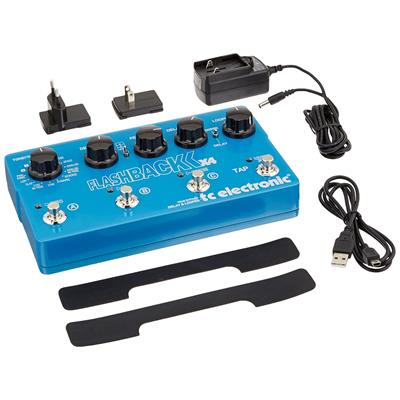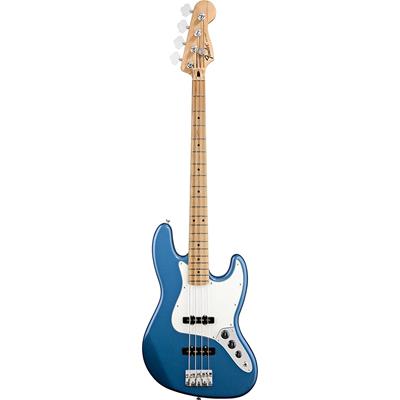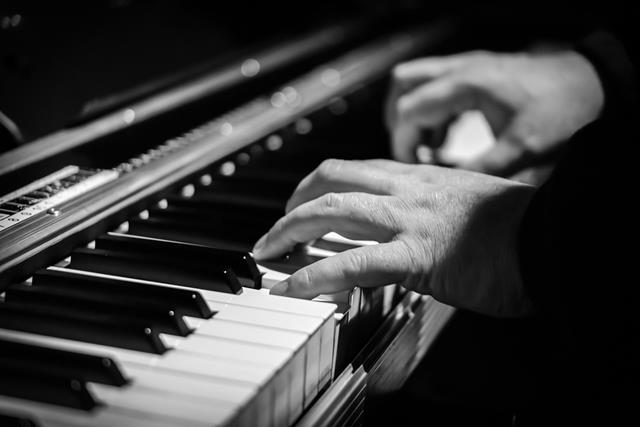 There are two types of roads a man can take in America. One going west and the other heading south. I’ve dreamt of taking both, but the South has always seemed to be more exotic, more unexplored, something newer, despite being as old as the world. Well, not really the world, but the United States mostly.
There are two types of roads a man can take in America. One going west and the other heading south. I’ve dreamt of taking both, but the South has always seemed to be more exotic, more unexplored, something newer, despite being as old as the world. Well, not really the world, but the United States mostly.
I don’t mean the big cities and their maddening white noise. What beckons me south is the sweet sound of music, true country, where the banjo and guitar meet on the porch of an old house and wherein the middle of the night men and women dance the jig drunk on the moonlight and the moonshine. Yes, the banjo scene from Deliverance partially inspires me to travel down with the Mississippi every time I watch it. And yes that movie is also the reason why I don’t do it.
I also know that these things don’t happen, not ever since probably the 1950s or maybe even earlier, but movies and fear are my big weakness, and having seen that movie at a too-young age has become a very strong demotivator fella. Lucky me though I do not have to go way down south. After all the Banjo has traveled northeast and around the world so I don’t really need to travel down south to hear the best banjo. Not only that, but the banjo, which you stereotypically think is as US-country as it gets, is actually a worldly instrument. So much so that you can find banjos all over the world.
What’s The Best Banjo
Gold Tone CC-100R Cripple Creek Banjo with Resonator

Miners used to be the backbone of the United States. These people would go deep underground in search of precious metals and minerals, working harder than death to acquire what they wanted. Cripple Creek, the town that was once chock full of prospectors and gold miners, was one of the homelands for these men. This is where their work was done and their music was played, the old world where the banjo was king of instruments. So it is only fitting that the Gold Tone CC-100R Resonator Banjo should be named after Cripple Creek. A town that produced only gold for the longest time. This banjo sports a maple neck and a rosewood fretboard, with two adjustable truss rods and a convertible resonator. Combined with moderate pricing, this gold nugget, is perfect for anyone looking to start playing banjo, allowing them to get used to different styles of play over time.
Pros:
- Quality construction
- Comfortable and lightweight
- Great volume and sound
Cons:
- A bit expensive for beginner banjos
- There seems to be very few websites that have them in stock
Deering Goodtime 5-String Banjo
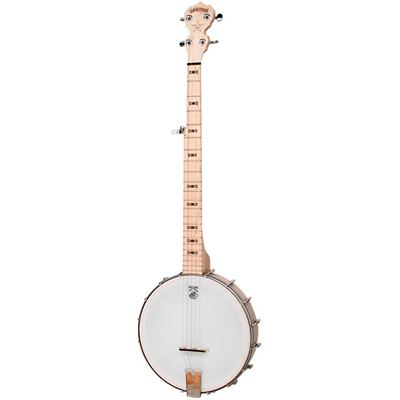
There are few things in the world more irritating and pleasant at the same time than learning to play a new instrument. Especially when the instrument you are holding feels as familiar (if you are a guitar player already) as a banjo. The thing to remember is to have a good time while learning the instrument, and suddenly things will get better. Thinking of positivity is made especially easy with the Deering Goodtime 5-string banjo, an instrument that is part of the series named after the fun they are to play. This light, maple neck banjo, produces a beautiful sound for the price of a banjo that could be half its quality, this is one of the best beginner banjos available on the market. This banjo is bound to become one of your favorite instruments to play for practice or even when you just want to mess around with an instrument.
Pros:
- Great looks
- Mellow tone
- Comfortable
- Great for traveling
Cons:
- A bit expensive for beginners (but when it comes to banjos, I am a firm believer that you should invest your money in a good instrument)
- Not as much volume
Jameson Guitars 5-String Banjo 24 Bracket with Closed Solid Back
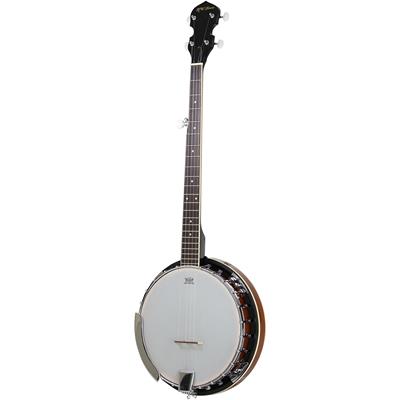
Not all banjos are equal. Some are destined for greatness while others will forever remain in obscurity. The banjo I will be discussing now was made with greatness in mind, but not the greatness of the stage kind. This instrument was made for anyone looking for a quality sound out of a practice banjo, out of their first banjo or out of their emergency banjo. The Jameson Guitar 5-string Banjo, 24 Bracket with Closed Solid Back was made as a lifesaver. Its greatness lies in it ability to produce a solid sound no matter the context. While the solid back limits its versatility compared to a number of others on the list, this instrument is still one of the best-sounding banjos for the price. With a price well below the 200 mark, this banjo has no right to be as good as it is. This is one of the best inexpensive banjo options found on the market today, appreciated both by beginners and professionals for the solidity and reliability of what this instrument provides.
Pros:
- Mellow, sweet sound
- Great price
- Lightweight, well-balanced construction
Cons:
- Not the best volume
- Like with a lot of cheaper models, there are inconsistencies (some people receive damages or wrong models)
Rover RB-20 Open Back 5 String Banjo

Once upon the American 1950s, 1960s, and 1970s there used to exist harmony banjos that had a special type of rim. These sounded sweet and bright, something like what a piece of strawberry candy tastes like. I know that comparing sound and taste is the worst possible analogy, but how else would you like me to explain a sweet and whimsical sensation of childish fun and innocence that this banjo produces when you start playing it?.. Oh… Well, the thing is, this instrument is incredible. The vibrant, straight-to-the-heart sound of this implement is enhanced by its open back, creating a feeling of vintage, old-timey musicality, with a mellow feeling and a tear brought to your eye. Rover RB-20 is one of the best beginner banjos, thanks to its low price and beautiful sound.
Pros:
- Great sound
- Lightweight
- Simple, functional hardware
- Great for traveling
Cons:
- Action is a bit high
- Change strings
Rogue Learn the Banjo Starter Pack
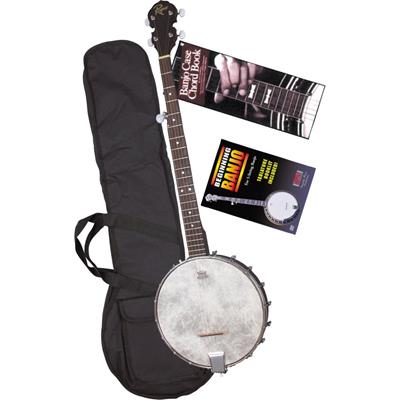
Everybody knows that the best things in the world are cheap and come as part of something. Well, not in the sense of best quality, but in the sense of best availability. The Rogue Learn the Banjo Starter Pack is one of the things. It is a pack that is chock full of goodies all countryside instrumental beginners will appreciate, especially if you are from a city and have to pay rent that ends up being more than the worth of most things you own. The pack comes with a rogue traveler, open-back banjo, a nice, padded gig bag, a book full of banjo chords and finally, a DVD that will give you lessons in Banjo. If you are thinking that this is the best value banjo purchase, you might not be wrong at all. So much so, you will feel a little like a criminal after picking it up, and all you will need to fulfill the roguish archetype is to start traveling around and robbing people of their money by giving them the pleasure of their music.
Pros:
- Great price
- Lightweight
- Great for traveling
- Mellow sound
- Gig bag is pretty sturdy and durable
Cons:
- Instructional DVD is pretty basic
- There is a bit of a buzz on strings
Pyle 5-String Geared Tunable Banjo PBJ60

Ask any rock star and they will tell you: looking good is just as important as sounding good in showbiz (ugh, that word). This is why so many of them strap on layers and layers of jewelry, and grow outlandish beards and hair that at times may seem like a bird’s nest and at others like too much hairspray applied to a dog’s butt. You don’t really need that in the banjo world though. In the world of country and bluegrass, you can look as low-key as you want, the sound needs to speak for you. Sometimes though, there will come by a moment when you find yourself a unique look. The Pyle 5-String Geared Tunable Banjo PBJ60 is one of those moments. The funny thing is, with the ease of play and accessibility of this instrument, as well as the low price, you might find yourself finding your unique look at the very beginning of your banjo career. The instrument does also have a solid sound for the price, but do not expect it to be the best banjo ever.
Pros:
- Good sound
- Lightweight
- Amazing price
Cons:
- Not the highest quality hardware
- Needs to be set up
Gold Tone CC-Plectrum Cripple Creek Plectrum Banjo
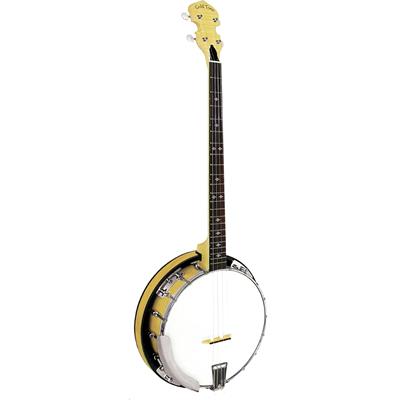
All prospectors and miners have one thing that makes them very much like investors and people on wall street (though the amount of work involved is light years apart): they are all gamblers. Cripple Creek, the old prospector town I spoke of once already on this town, was also known for being the gamblers’ town. These rambunctious men would either be miners who found their fortune and lost it, or drifters passing through town, looking for the night’s thrill at the card table. They all wanted the local gold and some of them knew how to acquire it efficiently, without digging down underground and staying there 10 hours a day. In a way you might say it is fitting that these were the men who brought the plectrum banjo into town. It is also fitting to have them related to this incredibly efficient plectrum banjo, that plays with incredible ease and speed, producing golden tones with every string picked. On the slightly less affordable side of affordable, Gold Tone CC-Plectrum makes a great addition to any musician’s treasure trove.
Pros:
- Great craftsmanship
- Good action and bridge
- Volume
Cons:
- A lot of spacing between strings
- Great price for intermediates, but as a beginner it might be expensive (I would still recommend)
Rover RB-20T Resonator Tenor Banjo

Everyone who has ever studied music has met at least one musician who had the desire, and as you suspected many times, the spirit to be a wanderer. These people usually ended up creating their best music, or performing their best, when they had spent some time away, traveling, either the entire country, state, or just the weekend hike out. These people are what I like to call rovers, people who need to be constantly on the move to remain inspired. These are also the people that I believe would benefit greatly from a banjo, especially the one that is dedicated to them. The Rover RB20T Resonator Tenor Banjo is a comfortable and lightweight 4-string banjo that is versatile in sound and performs Irish Banjo music, Bluegrass and Jazz equally well. The sound this instrument produces is great, much better than something you’d expect out of something as affordable as this banjo.
Pros:
- Lightweight
- Great price
- Comfortable for beginners
Cons:
- Action is high
- Strings
- Some websites list it as “resonator” so don’t be mistaken by that
Luna Folk Series Celtic Six-String Banjo

The Celtic traditions have long since appeared strange and sometimes even foreign to modern men and women. Runes, Druids, rituals under the moon, and potions that needed outlandish ingredients. The strangeness does not end there though. The Luna Folk Series Celtic Six-String Banjo might seem as one of the stranger’s banjo builds you have ever seen. I mean, where is the head of the banjo? How is the sound projected? How does this thing work? Well, first of all, the head is there, it’s just transparent so you don’t really get to see it in the pictures. Funny right? Second of all, the guitar is more exceptional than it looks. The sound it produces is beautiful, vibrant, strong and precise, projecting into the front thanks to the resonator. The Celtic design provides a beautiful visual to go along with the beautiful sound, while the affordable price of the instrument makes its available to all kinds of musicians.
Pros:
- Amazing looks
- Great price for quality
- Comfortable
Cons:
- No instructions for set up
- Takes a while to stay in tune
- High action
Jameson Guitars 6 String Banjo Guitar with Closed Back Resonator

For all you guitar players looking for a way to get into banjos without having to sacrifice the use of all your fingers and your rent for the month, I have a present. It is very simple, but through this simplicity, this present acquires all the qualities that you will value in it forever. The Jameson Guitars 6 String Banjo Guitar with Closed Back Resonator has all 6 strings so you can keep using your pinky without a break. It has a resonator at the back so that the sound you produce is projected forward with the power you are used to in a guitar. The sound of the instrument is solid, never failing and making you never give up on it, at least until you are so advanced with the banjo that this one cannot keep up with your speed. But, possibly most importantly, this banjo is affordable – one of the greatest qualities a beginner could ask for. After all, you are currently unsure whether you actually want to play the instrument for as long as the cost will require of you. One of the best banjos under 200 should serve you right then.
Pros:
- Amazing option for people who play guitars
- Quality and simple hardware
- Great price
Cons:
- Not the best fretboard job
- Buzz on certain strings
History of Banjo
The origins of the magical Banjo might surprise you a little more than you expect. Before it became the staple of United States country music, the instrument existed in many places, in different forms. The first modern iteration of the instrument was found on the Caribbean islands, around the 17th century. Like many things that the American culture loves to boast about, the instrument was brought over to the new world by the involuntarily displaced.
These men and women who would live their lives in slavery found rare peace in bringing parts of their ancient cultures with them when coming to the western hemisphere. When they finally got onto Caribbean ground they built iterations of the ancient versions of the Banjo that can still be found in the western parts of the African continent. From there the instrument reached the continent, the southern plantations, and the ears of the white settlers. These people learned to play the instrument from the slaves, as children or adults.
In the end, the banjo began permeating the culture of the united states, with the actual history of the instrument giving way to the belief that the instrument was born in the backwoods and the hidden nooks and crannies of the South. Now the instrument, with its true history known well, stands as one of the most valuable American instruments. No true Americana setting is complete without a banjo kept in mind as the sound of the instrument has become as patriotic and proud as the bald eagle.
The many versions of the banjo that were created by nations and tribes in Africa do have multiple cousins around the world. The Japanese shamisen, the Persian tar, the Moroccan Sintir, and the Georgian (not the state) Panduri share many similarities with the banjo. The shape of the body, the number of strings, and the sound the banjos make are all similar. The modern stands apart from these instruments, as the materials used for the construction of the instrument have changed. The sound, as a result, has become more emphasized and unique. Still, the past and the distant cousins are to be remembered as the reason modern music exists the way it does.
Banjo Structure
The banjos of the old had a more or less simple structure. Composed of a body made of a gourd, and elongated neck and fretboard and the peg where the tuners were located. The number of strings ranged from three to 6. The structure of the modern banjo has changed, making it more complex and in turn, giving it a more unique sound.
The Peghead and Tuners
The top end of the Banjo is called the Peghead. This part of the instrument is where the tuners for the strings are located. There are two types of tuners – Planetary and Guitar style, with the guitar style tuners sticking out to the side, while the planetary go through and are behind the peghead. At the bottom of the peghead is where the nut is located, aligning the strings as they travel toward the body.
Fingerboard and Neck
The fingerboard is usually made of highly durable wood, so it can take wear from playing the instrument for many years to come. This is where the frets and inlays are located on the fingerboard of the banjo. The length of the neck of the banjo depends on what type of instrument it is. This part of the instrument is also made of wood, with the truss rod located under the neck of the banjo. Stabilizing the neck of the banjo, the truss rod also allows the player to adjust the height of the strings from the fingerboard to what the player prefers.
The Pot
The pot, or the body, of the banjo is part of the instrument that has undergone the most change over the course of history. Once made out of gourds and wood, the modern banjo is constructed very differently. The pot, nowadays, might remind you more of a snare drum than of a gourd or even a pot.
The pot is made of several parts: the Tension Hoop, the Head, the Tone Ring, the Rim, the Flange and for resonator variation for banjos, a resonator in the back. Some banjos will also have a handrest for playing comfortably. Each one of these parts plays an important role in the sound of the banjo.
- Head
- This part of the banjo acts as the soundboard, vibrating as the instrument is played. Alternative thicknesses of the head produce different sounds, meaning that you, as the player, can customize your sound by changing the head.
- Tension Hoop
- The tension hoop keeps the head of the banjo tight. The hoop is put over the head of the banjo and tightened by using hooks and nuts. Different levels of tightness will produce different effects. There are many materials these hoops can be made of.
- Tone Ring
- This part of the banjo is one that affects the sound of the instrument the most. Different materials will produce different sounds, with wood being more rounded and warm, steel being more crisp and bright, and brass will have a more powerful, highly projecting sound. Think well when choosing the tone ring as it will have an important effect on the instrument.
- Rim
- The rim is the architectural heart of the instrument. This is where most of the banjo comes together, with every part of the pot hanging on the rim. Which is why the rim should be sturdy. It also plays a role in the sound of the banjo.
- Flange
- The flange helps every part of the pot to stick together, while also serving as the attachment point for the resonator through the use of thumb screws.
Resonator
Not all banjos have a resonator. In those that do, the resonator serves a very specific purpose. It acts as a soundboard and a reflection board for the sound of the banjo to spread better, louder, and towards the front.
The banjos that do not have a resonator tend to have the sound come out toward the back of the instrument. Sometimes this results in the body of the player absorbing some of the sounds, making it either quieter or less tonally distinct.
Types of banjo
The banjo, despite having a strong root in country music and bluegrass music culture, is a very versatile instrument. It can and has been used in many different genres to different ends. There are also a number of different versions of the modern banjo, all of them being very versatile but also very specific in their sound.
4 String banjos
The four-string banjo is what you think of when you hear lively banjo music. Used a lot in Irish banjo music, the instrument has also found use in Traditional Jazz. These banjos are traditionally tuned tenor, which is the best Irish banjo sound you can get.
- 17 Fret Tenor Banjo
Most often referred to as the Irish Tenor banjo.
- 19 Fret Tenor Banjo
More often used in Traditional Jazz, but also present in Irish Banjo music.
- Plectrum Banjo
The plectrum banjo is known as such for the fact that it is played with a plectrum, also known as pick. This banjo is usually played fast and is the instrument you think of when you imagine an old country musician playing the instrument.
5 String
The 5-string banjo is one of the more manufactured types of instrument. This one has a fifth string, which is often shorter than the other four, and the tuner which is somewhere along the middle of the neck. This is one of the most versatile types of banjos, gracing many genres such as folk, jazz, bluegrass, country, gospel, and even rock and roll with its presence. Definitely worth having and even more valuable to know how to play, you might find a 5 string banjo to be one of your best friends in your musical journey.
6 String
The six-string banjo is gaining popularity in the world of music thanks to its structural similarity to guitars. With all instrumentalists seeking to draw from a larger part of the musical world. The 6-string banjo is the easiest to learn after guitar, with tuning similar to the guitar easily available. Despite this, the instrument retains the sound integrity of the banjo, remaining as twangy and typical as any other banjo.
Parlor banjo
The only difference between a parlor banjo and a five-string banjo is the size. Parlor banjos were originally made with travelers in mind. People would visit crowded bars and perform there, staying out on the road for long stretches of time. Today, these small size instruments are often used as beginner instruments for children. Lightweight and small in size they are comfortable to practice and even more comfortable to carry.
Long Neck
These banjos look like giraffes and truly are the giants of these instruments. Standing at a staggering (not really, I just like to exaggerate) 32 7/64 inches, this guitar has several stand-out features. Originally it was made to play folk music. Today the fact that it lends itself to special tuning makes this one of the more versatile and favored instruments by musicians who hate being confined to a single genre of music. Ever since its birth and the decline of the folk music era (which by the way is making a great comeback) the instrument has been used in genres such as bluegrass, and country as well as to different techniques, such as strumming and clawhammer.
12 Sting
The 12-string banjo does exist and yes, it sounds as strange and unique as you could ever imagine. I mean if you have heard the 12-string guitar, you’ll know that the harmonies created with the help of extra strings are exceptional. The same goes for the banjo. The result of the new strings is something of a dreamy effect on the sound of the instrument. The sound is much more harmonic and subdued, lends itself much easier to strumming, but at the same time emphasizes every tone so much more. A lovely instrument overall.
Best Banjo Brands
Gold Tone
What do you value in a brand that succeeds at producing banjos? Its southern vibes, the quality or overall value? The answers can vary from musician to musician and I can’t really talk about this subject with generalization in mind. What I can do, though, is to share my experience and attitude. I truly believe that brands that are founded and controlled by musicians always have a player-oriented approach. Gold Tone is a perfect example of that. This company was established by Wayne and Robin Rogers who have put a lot of effort into designing each and every model. Their team works like a machine – each member of the staff has their own task to fulfill. Someone sands frets, another one puts together certain details and so on. The final prototype is tested by the musicians themselves to make sure they are as good as possible. Their banjos are meticulous and powerful. You can rely on them even in the most important moments because the chances of them failing you are really low. Even though they have factories abroad, each new prototype of the banjo is designed and built by Wayne himself in Titusville, Florida. They use high-quality wood to make sure the tone is pure, authentic and dimensional. For me, Gold Tone Banjos have the level of craftsmanship that all manufacturers should look up to.
Deering
Speaking about the owners that play banjos themselves, Deering is another brand that was born as a result of the passion of Greg Deering. He got introduced to wood by his father when he was only two. Of course, he couldn’t work on it properly, but it’s how he started appreciating wooden crafts. He started playing banjo at the age of 13. At the age of 19, he started repairing these instruments and gained in-depth knowledge about the way they were built. He and Janet (his wife) established the company in 1975 and it has been a family business ever since. The company is only 44 years old, yet you won’t notice that it’s still young once you play their banjos. They grew rapidly, as they never ceased to turn to innovation and development. In 2009 they launched Eagle II which was equipped with a Twenty-Ten tone ring. It turned into a real success because it elevated the tonal qualities of their banjos. This brand caters to those who are looking for supreme instruments. As a beginner, you might not be willing to splurge, but as you mature professionally, you should check out wonderful models from Deering. After all, these babies might actually change your life!
Recording King
It’s time to turn to Recording King – a brand that was established back in the 1930s. You might think that those dates aren’t important, but in reality, they do carry a certain amount of significance. This company was founded in the golden era of musical instruments. During those times, they crafted acoustic, and one of the best classical guitars. Since this company doesn’t focus merely on banjos, Recording King started producing both of these instruments. Take a quick look at their banjos and you’ll notice their quality immediately. Those prime models are pure artwork – they are scrupulous, exquisite, and simply beautiful. Don’t even get me started on tone, because that’s the territory of unworldly satisfaction. Recording King banjos sound like magical instruments that emit wonderful notes no matter how you strum those strings. I know, I know, I’m exaggerating just a bit, but I can’t help it – these puppies are mind-blowing. The brand offers a wide selection of models that range from classic to dirty. You can select the one that suits your style and budget, but trust me, it won’t be an easy choice. No matter which one you pick out, Recording King Banjo will definitely be amazing!
Conclusion
The more I think about it, the more I realize that there is no point in being afraid. Judging by how I am now, accidentally, an adult I should be able to overcome the fear and finally do what I’ve always wanted. Get in my car and just go. Drive through the Appalachians, along the eastern coast, head into the mainland, across the Mississippi deltas, and through the rust belt of the Americas. How hard can it be? How scary can it be? I don’t think there is much risk to it beyond running out of gas and being stranded in a desert for about three hours. As a reward though I get all the fun of musical tourism. I get to see the real country, the real people of the small, distant towns. Maybe, if I am lucky, I will even get to see the real local musicians, the old men who still play their music the way they did 50 years ago, without being lured by fame and popular culture. Maybe I’ll get invited in for a slice of apple pie or the kindly farmer’s wife will give me some peaches for the road. And if I do get lucky maybe I won’t be hunted.
Most importantly though, if I do the road trip, maybe I will end up finding the quiet boy who spends his time in the evenings overlooking the woods from his dad’s porch. Sitting in the rocking chair, contemplating his existence, breathing the dry southern air with sweat gathering on his brow. His fingers move incessantly, his practice remaining uninterrupted for hours so that he can be the best banjo player. I hope I get to hear him practice. I hope I get to find out what the banjo really was made for. Maybe, you’ll be the kid (unless you’re like 30) playing one of the banjos above. Maybe I won’t have to leave town at all to hear you play it.
Good Luck!

 (5 / 5)
(5 / 5) (4.9 / 5)
(4.9 / 5) (4.8 / 5)
(4.8 / 5) (4.7 / 5)
(4.7 / 5) (4.6 / 5)
(4.6 / 5) (4.5 / 5)
(4.5 / 5)